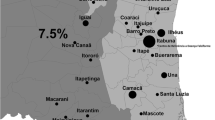Abstract
Sickle cell disease (SCD) is an inherited disorder of sickle hemoglobin affecting millions of people worldwide. The current study aimed at detecting the prevalence of MBL2 exon-1(codons 52, 54, and 57) and promoter region (-221, X/Y) genetic polymorphisms in Egyptian children with SCD to clear out its possible role as a genetic risk factor for susceptibility to vaso-occlusive crisis (VOC) and/or infections. Genotyping of exon-1 and the promoter region was done by polymerase chain reaction for 50 SCD patients and 50 healthy controls. The frequency of MBL2 promoter polymorphism was 32% for the heteromutant genotype, Y/X and 8% for the homomutant genotype, and X/X with no statistical difference in the distribution of the mutant genotypes between SCD patients and controls. MBL2 exon-1 gene mutation in SCD patients was 18% for the heteromutant genotype A/O and 32% for the homomutant genotype O/O. The O/O genotype was significantly higher in SCD patients. Mutation at codon 57 of exon-1 (C allele) was significantly higher in SCD patients. The frequency of intermediate MBL2 expressers was significantly higher in the control group, while the frequency of low MBL2 expressers was higher among the patients. The distribution of MBL2 expressers did not differ between SCD patients with or without recurrent attacks of VOC. There was no association between MBL2 exon-1 or promoter region (-221 Y/X) genetic polymorphisms and the susceptibility to neither VOC nor infections in Egyptian children with SCD.


Similar content being viewed by others
References
Ahmed SG (2011) The role of infection in the pathogenesis of vaso-occlusive crisis in patients with sickle cell disease. Mediterr J Hematol Infect Dis 3(1):e2011028, Epub 2011 Jul 8
Aittoniemi J, Soranummi H, Rovio AT, Hurme M, Pessi T, Nieminen M, Karjalainen J (2005) Mannose-binding lectin2 (MBL2) gene polymorphism in asthma and atopy among adults. Clin Exp Immunol 142:120–124
Arese P, Turrini F, Bussolino F et al (1991) Recognition signals for phagocytic removal of favic malaria-infected and sickled erythrocytes. Adv Exp Med Biol 307:317–327
Boldt AB, Culpi L, Tsuneto LT et al (2006) Diversity of the MBL2 gene in various Brazilian populations and the case of selection at the mannose-binding lectin locus. Hum Immunol 67:722–734
Dossou-Yovo OP, Zaccaria I, Benkerrou M et al (2009) Effects of RANTES and MBL2 gene polymorphisms in sickle cell disease clinical outcomes: association of the g.In1.1T NC RANTES variant with protection against infections. Am J Hematol 84:378–380
Frakking FN, Brouwer N, van Eijkelenburg NK, Merkus MP, Kuijpers TW, Offringa M et al (2007) Low mannose-binding lectin (MBL) levels in neonates with pneumonia and sepsis. Clin Exp Immunol 150:255–262
Garred P (2008) Mannose-binding lectin genetics: from A to Z. Biochem Soc Trans 36(Pt 6):1461–1466
Hebbel RP (2011) Reconstructing sickle cell disease: a data-based analysis of the “hyperhemolysis paradigm” for pulmonary hypertension from the perspective of evidence based medicine. Am J Hematol 86(2):123–154
Jeffery Model Foundation (2003) http://npi.jmfmworld.org. Accessed on 05 Jan 2004
Kato GJ, Gladwin MT, Steinberg MH (2007) Deconstructing sickle cell disease: reappraisal of the role of hemolysis in the development of clinical subphenotypes. Blood Rev 21(1):37–47
Koch A, Melbye M, Sorensen P, Homoe P, Madsen HO, Molbak K et al (2001) Acute respiratory tract infections and mannose-binding lectin insufficiency during early childhood. JAMA 285:1316–1321
Mangano A, Rocco C, Marino S, Mecikovsky D, Genre F, Aulicino P, Bologna R, Sen L (2008) Detrimental effects of mannose-binding lectin (MBL2) promoter genotype XA/XA on HIV-1 vertical transmission and AIDS progression. JID 198:694–700
Mendonça TF, Oliveira MC, Vasconcelos LR, Pereira LM, Moura P, Bezerra MA, Santos MN, Araújo AS, Cavalcanti MS (2010) Association of variant alleles of MBL2 gene with vasoocclusive crisis in children with sickle cell anemia. Blood Cells Mol Dis 44:224–228
Nebor D, Bowers A, Hardy-Dessources M, Knight-Madden J, Romana M, Reid H, Barthélémy J, Cumming V, Hue O, Elion J, Reid M, Connes P, CAREST study group (2011) Frequency of pain crises in sickle cell anemia and its relationship with the sympatho-vagal balance, blood viscosity and inflammation. Haematologica 96:1589–1594
Neonato MG, Lu CY, Guilloud-bataille M et al (1999) Genetic polymorphism of the mannose-binding protein gene in children with sickle cell disease: identification of the three new variant alleles and relationship to infections. Eur J Hum Genet 7:679–686
Oliveira MC, Mendonça MF, Vasconcelos LR et al (2009) Association of the MBL2 gene exon 1 polymorphism and vasoocclusive crisis in patients with sickle cell anemia. Acta Haematol 121:212–215
Segat L, Covella S (2011) MBL1 gene in nonhuman primates. Hum Immunol 72(11):1084–1090
Skalnıková H, Freibergera T, Chumchalová J, Grombirıková H, Sedivá A (2004) Cost-effective genotyping of human MBL2 gene mutations using multiplex PCR. J Immunol Methods 295:139–147
Steffensen R, Thiel S, Varming K, Jersild C, Jensenius JC (2000) Detection of structural gene mutations and promoter polymorphisms in the mannan-binding lectin (MBL) gene bypolymerase chain reaction with sequence-specific primers. J Immunol Methods 241:33–42
Stuart MJ, Nagel RL (2004) Sickle cell disease. Lancet 364:1343–1360
Takahashi K, Ip WE, Michelow IC, Ezekowitz RA (2006) The mannose-binding lectin: a prototypic pattern recognition molecule. Curr Opin Immunol 18:16–23
Wang RH, Phillips G, Medof ME, Mold C (1993) Activation of the alternative complement pathway by exposure of phosphatidyl ethanolamine and phosphatidyl serine on erythrocytes from sickle cell disease patients. J Clin Invest 92:1326–1335
Wilson WA, Thomas EJ, Sissons JP (1979) Complement activation in asymptomatic patients with sickle cell anaemia. Clin Exp Immunol 36:130–139
Wood KC, Hsu LL, Gladwin MT (2008) Sickle cell disease vasculopathy: a state of nitric oxide resistance. Free Radic Biol Med 44(8):1506–1528
Worthley DL, Bardy PG, Mullighan CG (2005) Mannose-binding lectin: biology and clinical implication. Intern Med J 35:548–555
Author information
Authors and Affiliations
Corresponding author
Rights and permissions
About this article
Cite this article
El Deen, M.A.K., Khorshied, M.M., El Sadani, Z.A. et al. Mannose-binding lectin (MBL2) gene polymorphism in sickle cell anemia: an Egyptian study. Comp Clin Pathol 22, 387–394 (2013). https://doi.org/10.1007/s00580-012-1420-y
Received:
Accepted:
Published:
Issue Date:
DOI: https://doi.org/10.1007/s00580-012-1420-y




